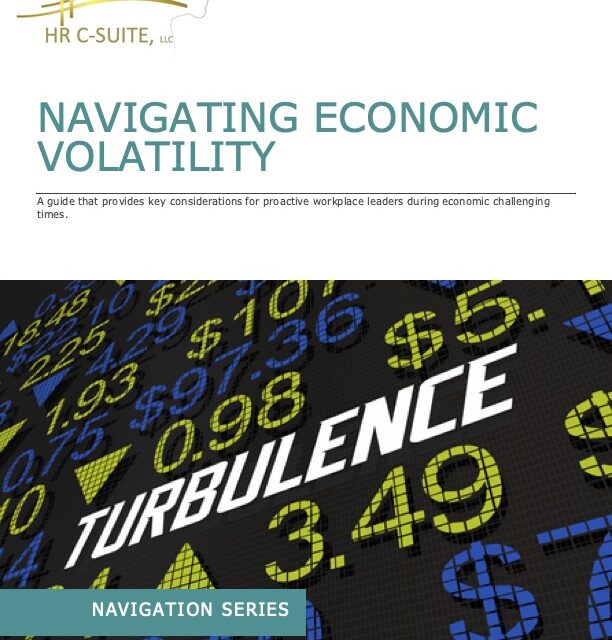In a world where economic, social, and organizational landscapes are constantly shifting, building resilience into HR strategies has never been more crucial. From navigating economic downturns to adapting to social changes and internal organizational disruptions, HR professionals are increasingly called upon to steer their organizations through stormy waters. Resilience in HR is not just about weathering the storm; it’s about emerging stronger, more agile, and better equipped for future challenges.
This article explores how HR professionals can build resilience into their strategies to successfully navigate uncertainties and provide steady leadership during times of change.
1. Understand the Pillars of Resilience
Before diving into strategic actions, it’s important to understand what makes an HR strategy resilient. Resilience is built on three key pillars:
- Adaptability: The ability to pivot and respond effectively to changing circumstances.
- Agility: The speed at which an organization can implement changes and make decisions.
- Sustainability: The long-term viability of strategies that balance immediate needs with future goals.
By focusing on these pillars, HR professionals can craft strategies that are not only reactive but proactive, anticipating potential challenges and positioning the organization to thrive in adversity.
2. Foster a Culture of Continuous Learning and Development
A resilient HR strategy starts with a culture that embraces continuous learning and development. When employees at all levels are encouraged to learn, adapt, and grow, the organization becomes more agile and capable of handling uncertainty.
- Action Step: Develop and promote a comprehensive learning and development program that includes leadership training, skill-building workshops, and access to online learning platforms.
- Key Consideration: Ensure that learning initiatives are aligned with the organization’s strategic goals and the evolving needs of the workforce.
- Outcome: A workforce that is better prepared to adapt to changes and challenges, reducing the impact of uncertainty on organizational performance.
3. Embrace Flexible Work Models
The COVID-19 pandemic has highlighted the importance of flexibility in the workplace. Organizations that were quick to adapt to remote work, hybrid models, and flexible schedules were better able to navigate the uncertainties brought about by the pandemic.
- Action Step: Create flexible work policies that allow for remote work, flexible hours, and job-sharing arrangements. Ensure these policies are clearly communicated and accessible to all employees.
- Key Consideration: Regularly review and update flexible work policies based on employee feedback and organizational needs. Flexibility should not come at the cost of productivity or employee engagement.
- Outcome: A more adaptable workforce that can maintain productivity and engagement, regardless of external disruptions.
4. Implement Strategic Workforce Planning
Strategic workforce planning involves forecasting future talent needs, assessing current capabilities, and identifying gaps. It’s about ensuring that the organization has the right people, with the right skills, at the right time.
- Action Step: Conduct regular workforce planning sessions that consider various scenarios—economic downturns, industry changes, or internal restructuring—and develop strategies to address potential gaps.
- Key Consideration: Use data-driven insights to inform workforce planning decisions. Leverage HR analytics to understand trends, predict turnover, and identify high-potential employees.
- Outcome: A strategic workforce that is aligned with the organization’s long-term goals and resilient to changes in the market or industry.
5. Prioritize Employee Well-Being and Mental Health
Uncertain times can take a toll on employee well-being and mental health. A resilient HR strategy prioritizes the health and well-being of employees, recognizing that a healthy workforce is essential for long-term success.
- Action Step: Develop a comprehensive well-being program that includes mental health support, wellness initiatives, and resources for stress management. Offer access to Employee Assistance Programs (EAPs), mindfulness training, and flexible time-off policies.
- Key Consideration: Create a culture where employees feel safe to speak up about their mental health needs without fear of stigma or retaliation.
- Outcome: A workforce that is more engaged, productive, and capable of navigating uncertainty without burnout.
6. Build Robust Communication Channels
In uncertain times, communication becomes even more critical. HR leaders must ensure that they are not only communicating effectively but also listening actively to the needs and concerns of employees.
- Action Step: Develop clear and transparent communication strategies that provide regular updates on organizational changes, business performance, and HR initiatives. Utilize multiple channels, such as town halls, newsletters, intranet, and team meetings, to keep employees informed.
- Key Consideration: Encourage a two-way communication culture where employees feel heard and valued. Regularly conduct surveys, focus groups, and feedback sessions to gather insights and make informed decisions.
- Outcome: Improved trust, engagement, and collaboration across the organization, which is essential for resilience in uncertain times.
7. Develop a Crisis Management and Contingency Plan
Uncertainty often comes in the form of unexpected crises. Whether it’s a natural disaster, economic downturn, or internal scandal, having a robust crisis management and contingency plan is essential for resilience.
- Action Step: Develop a crisis management team and framework that outlines roles, responsibilities, and procedures for handling different types of crises. Conduct regular drills and simulations to ensure readiness.
- Key Consideration: Include crisis communication strategies that address both internal and external stakeholders. Transparency and honesty are key to maintaining trust during a crisis.
- Outcome: A prepared organization that can respond quickly and effectively to crises, minimizing damage and ensuring continuity.
8. Reinforce Ethical Leadership and Organizational Values
Resilience is not just about processes and strategies—it’s also about leadership and values. HR leaders must reinforce ethical leadership and ensure that organizational values guide decision-making during uncertain times.
- Action Step: Develop leadership training programs that emphasize ethical decision-making, emotional intelligence, and resilience. Ensure that leaders at all levels are aligned with the organization’s values.
- Key Consideration: Create a culture of accountability where ethical behavior is rewarded, and misconduct is addressed promptly and fairly.
- Outcome: A values-driven organization that retains trust and credibility, even in challenging circumstances.
9. Invest in Technology and Digital Transformation
Digital tools and technology can significantly enhance HR resilience by automating processes, improving data analytics, and facilitating remote work. Investing in digital transformation allows HR teams to be more efficient and responsive to changes.
- Action Step: Identify key areas for digital transformation within HR, such as talent acquisition, performance management, and employee engagement. Invest in technology solutions that align with your strategic goals.
- Key Consideration: Ensure that technology investments are user-friendly and that employees are adequately trained to use new tools.
- Outcome: An agile HR function that leverages technology to enhance efficiency, decision-making, and employee experience.
10. Create a Feedback Loop for Continuous Improvement
Resilient organizations are those that continuously learn and improve. Establishing a feedback loop where employees, managers, and leaders provide regular feedback helps HR teams refine strategies and adapt to changing needs.
- Action Step: Implement regular feedback mechanisms, such as surveys, suggestion boxes, and performance reviews, to gather insights on HR policies and programs. Use this data to make data-driven decisions and improvements.
- Key Consideration: Ensure that feedback is acted upon and communicated back to employees to show that their voices matter.
- Outcome: A culture of continuous improvement that enhances resilience and adaptability.
Wrapping it up: Leading Through Uncertainty with Resilience
Uncertainty is inevitable, but how organizations respond to it makes all the difference. By building resilience into HR strategies, HR leaders can help their organizations not only survive but thrive in uncertain times. The focus should be on adaptability, agility, and sustainability, supported by a culture of continuous learning, ethical leadership, and employee well-being.
HR professionals have a pivotal role in steering their organizations through uncertain waters. By prioritizing resilience, they can build stronger, more agile organizations ready to face any challenge that comes their way.
Latest posts by Tresha Moreland (see all)
- Building a Resilient HR Strategy: How to Lead Through Uncertain Times - September 5, 2024
- The Role of Feedback Loops in Continuous Improvement: Creating a Culture of Learning - September 4, 2024
- Navigating Burnout: How HR Leaders Can Help Themselves When There’s No One Else to Turn To - September 3, 2024












